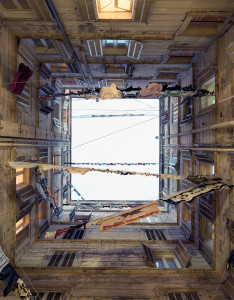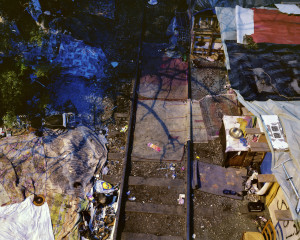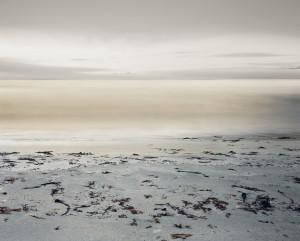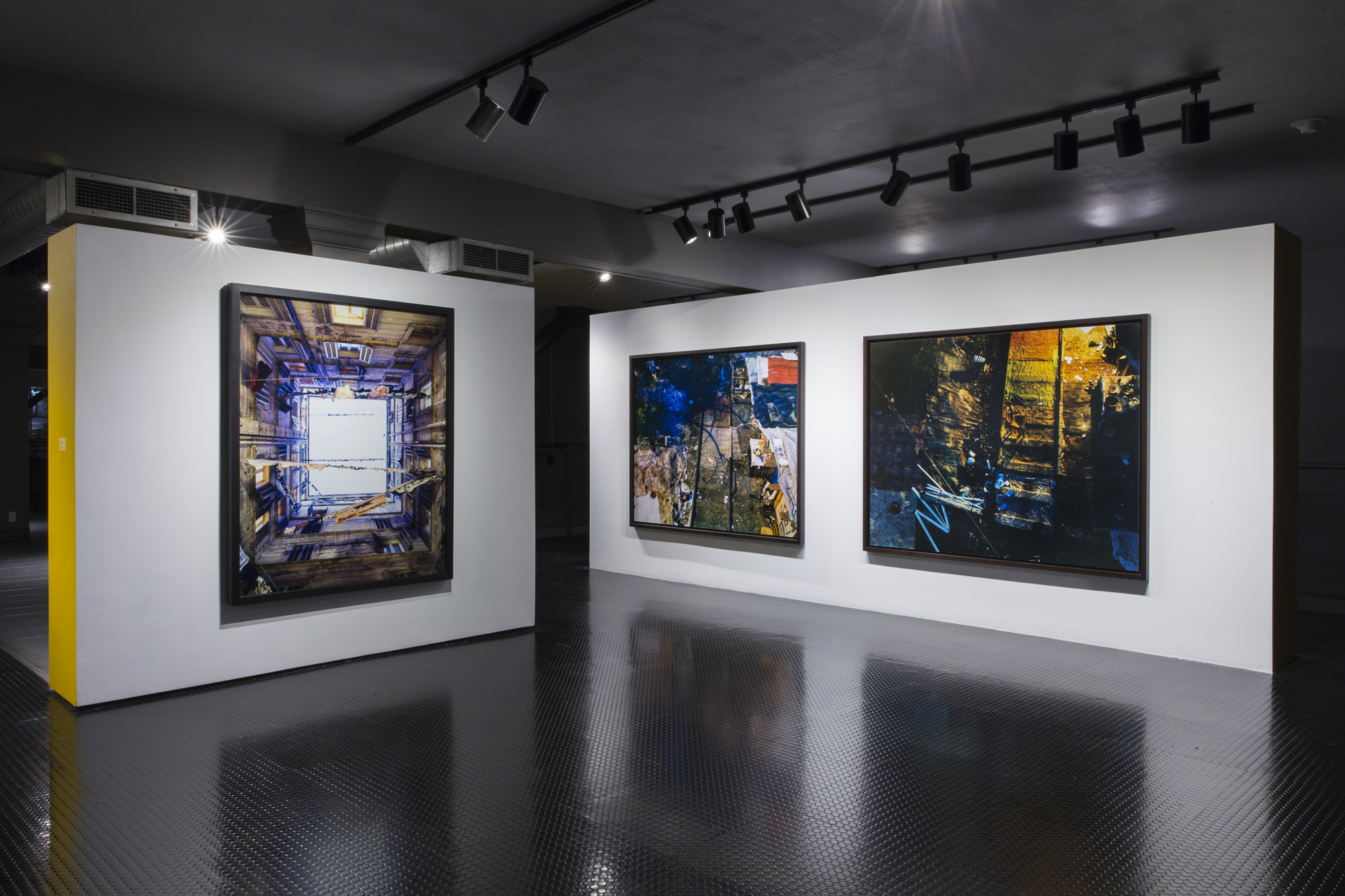Marie Bovo’s formally complex, visually gratifying and meditative photographs invite prolonged looking. What is captured in the viewfinder and the subsequent print is a mere ghost of her true subject, and this mediation or distance interposed between photographer and subject is just one aspect of the abstraction that may be drawn from the title of her solo exhibition, “How to Survive Abstraction,” at the UCR California Museum of Photography.

Marie Bovo, Cour intérieure, 15 février 2009 (2009), courtesy of the artist; kamel mennour, Paris; OSL contemporary, Oslo; California Museum of Photography at UCR ARTSblock.
Beyond the abstraction of a photographer’s relationship to subject, Bovo’s interest seems to seek the manner in which we are capable of abstracting the lives of people, or individuals as emblems, in this case, the lives of immigrants as the “other” or the relationship of part to whole or the effects of imperial power on the periphery. Bovo suggests all this by creating photographic works of specific places, contextualized by social, economic and political ramifications, without ever capturing or shooting a human subject with her camera.

Marie Bovo, Cour intérieure, 23 février 2009 (2009), courtesy of the artist; kamel mennour, Paris; OSL contemporary, Oslo; California Museum of Photography at UCR ARTSblock.
In her “Courtyards” series, of which, two examples are included in “How to Survive Abstraction,” Bovo photographs the interior courtyards of apartment buildings in Marseille along the Mediterranean coast. Built in the late 19th Century, the apartments once housed the middle class; now in obvious disrepair, they are home to immigrants from Algeria and Tunisia. Visually very still, the photographs capture a somewhat disorienting skyward view from the center of the courtyard. Various objects signify life—the courtyards are crisscrossed with clothes lines, and one extended exposure reveals a change of laundry from bedding to clothing—and the macro-context leads to thoughts of the difficulties faced by immigrants, not only in France, but elsewhere, and how cities shift over time. Bovo’s “Railway tracks” series, in a similar vein, explores a temporary encampment of the Roma people. Again, her photos brim with information and the signs of life, yet not one person occupies the frame.

Marie Bovo, La voie de chemin de fer, 3 mars 2012. 05H18 (2012), courtesy of the artist; kamel mennour, Paris; OSL contemporary, Oslo; California Museum of Photography at UCR ARTSblock.
Jours blancs, 1:29am (2012) takes on a global perspective, set on a beach inside the arctic circle in Lofoten, Norway. The strange shimmery, golden light reflected on the ocean’s surface is a function of the prolonged exposure and the twilight of the midnight summer sun above the arctic, leading to thoughts of Earth’s unique position in the solar system and space. Two plastic bottles entwined with kelp and a track of footprints present ephemeral evidence of human impact, suggesting questions of ever greater scope.

Marie Bovo, Jours blancs 01H29 (2012), courtesy of the artist; kamel mennour, Paris; OSL contemporary, Oslo; California Museum of Photography at UCR ARTSblock.
Marie Bovo, “How to Survive Abstraction,” December 19, 2015 – April 16, 2016, at the California Museum of Photography, UC Riverside, 3824 Main Street, Riverside, CA 92501, www.artsblock.ucr.edu


